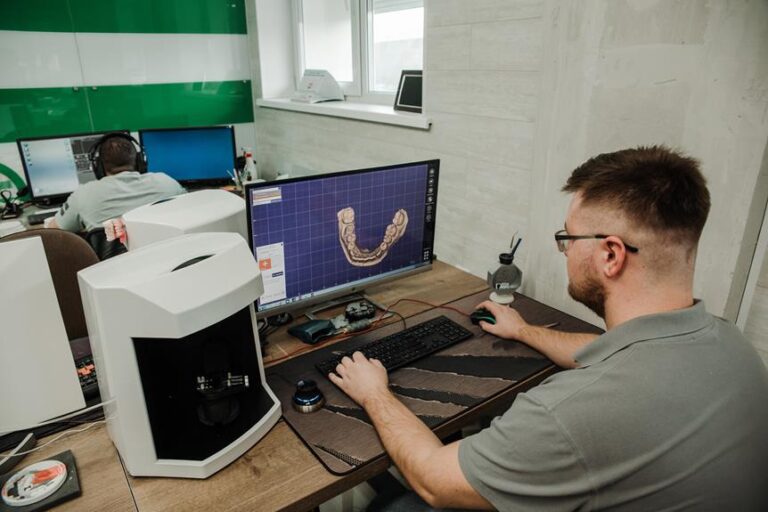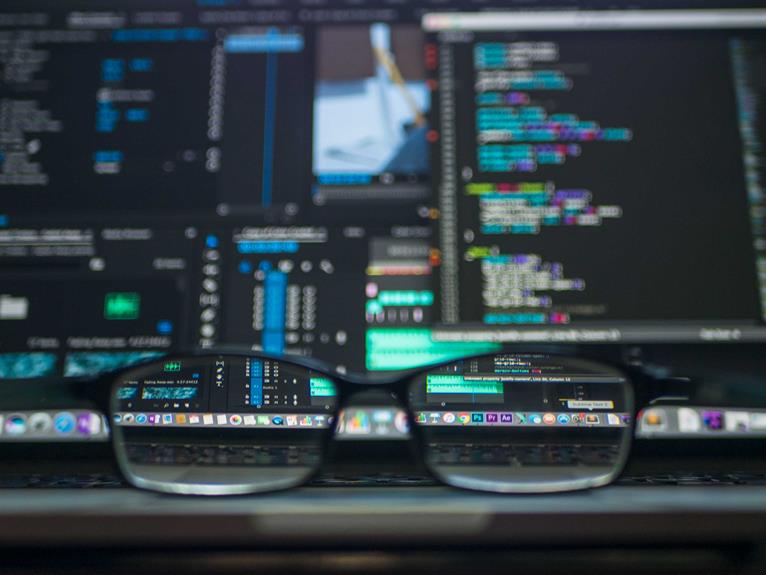Open-Source 3D Printers: Unveiling the Power of Free Innovation
Unveiling the power of free innovation, open-source 3D printers have emerged as a catalyst for liberation and progress. Embodying the spirit of collaborative creativity, these cutting-edge devices empower individuals, small businesses, and startups to bring their ideas to life.
By democratizing access to advanced manufacturing technology, open-source 3D printers revolutionize prototyping, education, and small-scale production.
This article delves into the rise of open-source 3D printers, exploring their benefits, recommended models, and the exciting innovations that lie ahead in this liberating realm of free innovation.
Key Takeaways
- Open-source 3D printers provide a more affordable alternative to traditional printers, making them accessible to a wider range of people.
- Open-source 3D printing fosters collaboration and creativity by allowing the sharing of designs, software, and knowledge.
- Open-source 3D printing enables the exchange of design files, fostering a culture of knowledge sharing and continuous improvement.
- Open-source 3D printers offer rapid prototyping, reducing the time it takes to iterate and refine designs.
The Rise of Open-Source 3D Printers
As the demand for affordable 3D printing technology grows, the rise of open-source 3D printers has become increasingly prominent in the industry. Open-source 3D printers refer to the hardware and software designs that are made available to the public, allowing individuals to freely modify and improve upon them. This concept of free innovation has revolutionized the world of 3D printing, empowering users to take control of their own printing capabilities.
Open-source 3D printers have gained popularity due to their accessibility and cost-effectiveness. Traditional 3D printers can be expensive, making them inaccessible to many individuals and small businesses. However, open-source 3D printers offer a more affordable alternative, enabling a wider range of people to engage in this technology.
Moreover, open-source 3D printers promote a culture of collaboration and knowledge sharing. By making the design files freely available, users can contribute to the improvement of the technology, enhancing its capabilities and addressing any limitations. This open approach fosters innovation and allows for continuous development.
Understanding the concept of free innovation is crucial in appreciating the significance of open-source 3D printers. Free innovation entails the democratization of technology, empowering individuals to participate in the creation and improvement of products. It challenges traditional notions of intellectual property and promotes a more inclusive and liberating approach to innovation.
Understanding the Concept of Free Innovation
The concept of free innovation is centered around the idea of open-source collaboration and creativity. By embracing open-source practices, individuals are able to freely access and modify existing technologies, leading to the development of new and innovative solutions.
This approach encourages a culture of sharing knowledge and ideas, fostering a collaborative environment where individuals can build upon each other's work to create even better solutions.
Benefits of Open-Source
Why is open-source innovation considered to be a powerful tool in the development of 3D printers?
Open-source 3D printers offer numerous benefits that can revolutionize the way we create and customize objects. Here are three key advantages of open-source 3D printing:
- Freedom to innovate: Open-source 3D printers enable individuals and communities to freely modify and improve the technology. This encourages continuous innovation and fosters collaboration among like-minded individuals, resulting in faster advancements and breakthroughs.
- Cost-effectiveness: Open-source 3D printers provide an affordable alternative to proprietary machines. By leveraging free innovation, users can access and modify the source code, reducing the cost of development and allowing for cheaper hardware options.
- Customization: Open-source 3D printers empower users to adapt and personalize their printing experience. With the ability to modify the software and hardware, individuals can tailor their 3D printers to their specific needs, unlocking endless possibilities for creativity and innovation.
Encouraging Collaboration and Creativity
Through fostering collaboration and encouraging creativity, the concept of free innovation within open-source 3D printers brings together a diverse range of individuals to collectively advance the technology. Open-source 3D printing allows for the sharing of designs, software, and knowledge, enabling a collaborative environment where ideas can be freely exchanged and improved upon. This fosters a sense of community and encourages individuals to contribute their unique perspectives and expertise. By removing the barriers of proprietary restrictions, open-source printing empowers users to modify and customize printer models to suit their specific needs, promoting a culture of experimentation and innovation. This collaborative approach not only accelerates the development of open-source printer models but also encourages the sharing of improvements and advancements, creating a cycle of continuous improvement and growth within the open-source 3D printing community.
| Benefits of Open-Source 3D Printers | ||
|---|---|---|
| 1. Foster Collaboration | 2. Encourage Creativity | 3. Enable Customization |
| 4. Accelerate Development | 5. Share Improvements | 6. Cultivate Innovation |
Benefits of Open-Source 3D Printing
Open-source 3D printing offers several benefits that contribute to its growing popularity.
Firstly, it enables collaborative design possibilities, allowing individuals and communities to work together to improve and modify existing designs.
Secondly, open-source 3D printers are more accessible in terms of lower cost, making them affordable for a wider range of users.
Lastly, the rapid innovation potential of open-source 3D printing allows for continuous advancements and improvements in technology, fostering a dynamic and evolving ecosystem.
Collaborative Design Possibilities
Collaborative design possibilities expand exponentially with the utilization of open-source 3D printing technology. This innovative technology allows for greater collaboration and creativity among individuals and communities. Here are three key benefits of collaborative design in the context of open-source 3D printing:
- Shared knowledge: Open-source 3D printing enables the exchange of design files, allowing designers from around the world to share their ideas, techniques, and expertise. This open collaboration fosters a culture of knowledge sharing and continuous improvement.
- Collective problem-solving: With open-source 3D printing, designers can come together to collectively address design challenges and find innovative solutions. By leveraging the wisdom of the crowd, complex problems can be tackled more efficiently and effectively.
- Customization and personalization: Open-source 3D printing empowers individuals to customize and personalize designs according to their specific needs and preferences. This level of customization enables greater freedom of expression and liberation from mass-produced, standardized products.
Lower Cost Accessibility
By enabling cost-effective production and democratizing access to manufacturing capabilities, open-source 3D printing offers significant benefits in terms of lower cost accessibility. This disruptive technology has revolutionized the manufacturing industry by reducing the barriers to entry and empowering individuals, small businesses, and communities to create their own products at a fraction of the cost.
Traditional manufacturing methods often require substantial investments in machinery, tooling, and labor, making it challenging for smaller players to compete. However, with open-source 3D printing, the cost of production is significantly reduced as it eliminates the need for expensive equipment and enables the use of affordable materials. This opens up opportunities for entrepreneurs, hobbyists, and inventors to bring their ideas to life without breaking the bank.
The lower cost accessibility of open-source 3D printing promotes innovation, creativity, and economic growth in a more inclusive and equitable manner.
Rapid Innovation Potential
With its ability to foster accelerated advancements and spur groundbreaking developments, open-source 3D printing presents numerous benefits in terms of rapid innovation potential. Here are three key ways in which open-source 3D printing fuels rapid innovation:
- Collaboration and Knowledge Sharing:
Open-source 3D printing encourages collaboration among individuals and communities, enabling the sharing of ideas, designs, and improvements. This collective intelligence allows for the rapid iteration and development of new products and technologies.
- Iterative Design Process:
Open-source 3D printing allows for a more iterative design process, where prototypes can be quickly and easily modified and tested. This iterative approach enables rapid refinement and improvement, reducing the time and cost typically associated with traditional manufacturing methods.
- Accessibility to Cutting-edge Technology:
Open-source 3D printing democratizes access to advanced manufacturing technologies, making them more accessible to a wider audience. This accessibility empowers individuals and small businesses to experiment, innovate, and bring their ideas to life, fostering a culture of rapid innovation.
Recommended Open-Source 3D Printer Models
When considering the selection of open-source 3D printer models, it is essential to evaluate their features and capabilities to determine the most suitable option for your specific needs. In the realm of open-source 3D printing, there are several recommended models that have gained popularity among enthusiasts and professionals alike.
One such model is the Prusa i3, which is known for its reliability and versatility. It offers a large build volume, allowing for the creation of larger objects, and is equipped with a heated bed, enabling the use of various materials. The Prusa i3 also boasts a solid frame design, ensuring stability during the printing process.
Another highly regarded open-source 3D printer model is the Ultimaker 2+. It stands out for its exceptional print quality and ease of use. The Ultimaker 2+ features a dual extrusion system, enabling the creation of complex multi-material prints. It also has a user-friendly interface and a sturdy build, making it a reliable choice for both beginners and experienced users.
For those seeking a more affordable option, the Creality Ender 3 is worth considering. It offers a decent build volume and delivers reliable print quality. The Ender 3 is known for its straightforward assembly process, making it an excellent choice for beginners or those on a tight budget.
Ultimately, the choice of an open-source 3D printer model depends on your specific requirements and budget. By considering factors such as build volume, print quality, ease of use, and cost, you can find the model that best suits your needs and empowers you to unleash your creativity in the world of 3D printing.
Exploring the Maker Community's Love for Open-Source 3D Printers
The maker community has a deep affection for open-source 3D printers due to the collaborative design benefits they offer.
By sharing their designs and knowledge freely, makers can work together to improve and refine 3D printer models, resulting in continuous innovation and development.
This community-driven approach fosters a sense of camaraderie and empowerment among makers, as they contribute to the ongoing evolution of open-source 3D printing technology.
Collaborative Design Benefits
Exploring the Maker Community's love for open-source 3D printers, collaborative design benefits are evident in the collective sharing of knowledge and expertise. This collaborative approach has revolutionized the world of 3D printing, empowering individuals to create and innovate like never before.
Here are three key benefits that arise from this collaborative design culture:
- Knowledge Exchange: Open-source 3D printers foster an environment where makers freely share their designs and experiences, allowing others to learn and build upon existing ideas. This knowledge exchange accelerates the development and refinement of designs, benefiting the entire maker community.
- Iterative Improvement: With collaborative design, makers can receive feedback and suggestions from a diverse group of individuals. This iterative improvement process helps to refine and enhance designs, resulting in better quality and functionality.
- Community Support: The maker community provides a strong support network for individuals using open-source 3D printers. Whether it's troubleshooting technical issues or assisting with design challenges, the community offers guidance and encouragement, creating a sense of camaraderie and empowerment.
Community-Driven Improvements
A maker community's love for open-source 3D printers is evident in the community-driven improvements that continuously enhance the capabilities of these innovative devices. The open-source nature of these printers allows users to modify and improve upon the existing designs, sharing their enhancements with the wider community. Through collaboration and knowledge sharing, makers are able to collectively push the boundaries of what these printers can achieve. This communal effort has resulted in significant advancements in areas such as print quality, speed, and materials compatibility. To illustrate the breadth of these improvements, a table showcasing some notable community-driven enhancements is included below:
| Enhancement | Description | Benefits |
|---|---|---|
| Upgraded Extruders | High-performance extruders that improve print quality and speed. | Enhanced print quality and faster printing times. |
| Auto Bed Leveling | Automatic calibration of the print bed for improved print accuracy. | Eliminates the need for manual bed leveling, resulting in better prints. |
| Multi-Material Capability | Modifications that enable printing with multiple materials in a single print. | Increased design possibilities and versatility. |
| Improved Cooling Systems | Enhanced cooling mechanisms for better part cooling and reduced warping. | Minimizes print defects and improves overall print quality. |
| Quieter Operation | Upgraded components and noise reduction techniques for quieter operation. | Provides a more pleasant printing experience.
These community-driven improvements not only showcase the ingenuity of the maker community but also highlight the power of open-source 3D printers to evolve and adapt to the needs and desires of their users. With a constant stream of enhancements, these printers continue to evolve, offering endless possibilities for customization and experimentation.
Transition: Now that we have explored the community-driven improvements in open-source 3D printers, let's delve into the exciting realm of customization possibilities with these innovative devices.
Customization Possibilities With Open-Source 3D Printing
Open-source 3D printing offers users an array of customization possibilities. With the power of open-source software and hardware, individuals can tailor their 3D printing experience to suit their unique needs and preferences. Here are three exciting ways in which open-source 3D printing enables customization:
- Design Modifications: Open-source 3D printing allows users to modify existing designs or create their own from scratch. This freedom empowers individuals to personalize objects, adjusting dimensions, adding or removing features, and even combining multiple designs into one. The ability to customize designs opens up endless possibilities for innovation and creativity.
- Material Choices: Open-source 3D printers offer flexibility in material selection. Users can experiment with a wide range of filaments, including plastics, metals, ceramics, and even food-grade materials. This allows for the creation of functional prototypes, artistic objects, and even custom-made tools or replacement parts.
- Software Control: Open-source 3D printers provide users with control over the printing process through customizable software interfaces. This enables fine-tuning of printing parameters such as print speed, layer height, and infill density. Additionally, users can choose from a variety of slicing software, each offering unique features and customization options.
Open-Source 3D Printers: A Game-Changer for Prototyping
With the advent of open-source 3D printers, businesses and individuals alike have been provided with a game-changing tool for rapid and cost-effective prototyping. These printers have revolutionized the traditional prototyping process by allowing users to create physical objects from digital designs in a matter of hours, rather than days or weeks. The table below highlights the key advantages of open-source 3D printers for prototyping:
| Advantages | Description |
|---|---|
| Speed | Open-source 3D printers enable rapid prototyping, allowing businesses to iterate and refine designs quickly. This accelerates the product development cycle and reduces time to market. |
| Cost | Traditional prototyping methods can be expensive, involving manual labor and specialized equipment. Open-source 3D printers offer a cost-effective alternative, eliminating the need for costly tooling and reducing material waste. |
| Customization | Open-source 3D printers allow for highly customizable prototypes. Users can easily modify and adapt designs to meet specific requirements, creating unique solutions that cater to individual needs. |
The ability to rapidly prototype and iterate designs has significant implications for industries such as manufacturing, engineering, and product development. Open-source 3D printers empower businesses and individuals to test and validate their ideas quickly, bringing products to market faster and more efficiently. Furthermore, the cost-effectiveness and customization possibilities offered by these printers make them an invaluable tool for small businesses and startups, leveling the playing field and enabling them to compete with larger, more established companies. In conclusion, open-source 3D printers have truly transformed the prototyping landscape, empowering innovation and paving the way for a more accessible and inclusive future.
Open-Source 3D Printing for Education and Learning
The integration of open-source 3D printers into education and learning environments has proven to be a catalyst for creativity and innovation. These accessible and affordable machines are revolutionizing the way students learn and engage with subjects. Here are three ways open-source 3D printing is empowering education:
- Enhancing hands-on learning: Open-source 3D printers allow students to bring their ideas to life by transforming digital designs into physical objects. This hands-on experience fosters a deeper understanding of concepts and encourages critical thinking and problem-solving skills.
- Promoting interdisciplinary collaboration: 3D printing encourages collaboration between students from different disciplines. Whether it's designing prototypes for science experiments, creating models for history projects, or building architectural structures, open-source 3D printers provide a platform for students to work together and combine their expertise.
- Enabling personalized learning: With open-source 3D printers, educators can customize learning materials to meet individual student needs. They can create tactile models for visually impaired students, develop interactive tools for kinesthetic learners, or design unique teaching aids that cater to different learning styles.
As open-source 3D printing continues to gain popularity in educational institutions, it is also making its mark on small businesses and startups. Transitioning into the subsequent section, we will explore how open-source 3D printers are empowering these entrepreneurial ventures.
Open-Source 3D Printers: Empowering Small Businesses and Startups
As the utilization of open-source 3D printers expands, small businesses and startups are finding themselves empowered to innovate and compete in the ever-evolving marketplace. Open-source 3D printers provide these businesses with an affordable and accessible tool to bring their ideas to life, enabling them to rapidly prototype and manufacture their own products.
One of the key advantages of open-source 3D printers for small businesses and startups is the ability to customize and iterate designs quickly. Traditional manufacturing methods often involve long lead times and high costs for producing prototypes. With open-source 3D printers, entrepreneurs can easily make modifications to their designs and print multiple iterations in a matter of hours. This agility allows them to refine their products based on customer feedback and market demand, giving them a competitive edge.
Moreover, open-source 3D printers enable small businesses and startups to reduce their reliance on external suppliers. By producing components in-house, they can save on outsourcing costs and have greater control over their supply chain. This level of independence not only increases their flexibility but also decreases the time it takes to bring products to market.
Additionally, open-source 3D printers provide opportunities for collaboration and knowledge sharing among small businesses and startups. With open-source designs and software, entrepreneurs can learn from each other's experiences, build upon existing innovations, and collectively push the boundaries of what is possible.
The Future of Open-Source 3D Printing: Exciting Innovations Ahead
In the future of open-source 3D printing, exciting innovations are on the horizon, presenting new opportunities and advancements in various industries. As the technology continues to evolve, here are three key innovations that we can expect to see:
- Enhanced Material Options: Currently, most open-source 3D printers are limited to printing with plastics. However, researchers and developers are actively working on expanding the range of materials that can be used. In the near future, we can expect to see advancements in printing with metals, ceramics, and even biological materials. This opens up a whole new realm of possibilities for industries such as aerospace, healthcare, and manufacturing.
- Faster Printing Speeds: One of the limitations of 3D printing is the time it takes to complete a print. However, researchers are constantly working on improving the speed of printing without compromising the quality. With advancements in hardware and software, we can anticipate significantly faster printing speeds, enabling more efficient production processes.
- Integration with Artificial Intelligence: Open-source 3D printers will soon benefit from the integration of artificial intelligence (AI). AI algorithms can optimize the printing process, analyze designs for potential improvements, and even predict potential printing errors. This combination of AI and 3D printing will revolutionize the manufacturing industry, allowing for increased precision, reduced waste, and improved overall efficiency.
As open-source 3D printing continues to evolve, these exciting innovations will unlock new possibilities and revolutionize various industries. The future of 3D printing is bright, and we can expect to witness a wave of advancements that will liberate creativity and transform the way we manufacture and innovate.
Frequently Asked Questions
What Are the Potential Risks or Downsides of Using Open-Source 3D Printers?
The potential risks or downsides of using open-source 3D printers include a lack of support or warranty, potential for unreliable or faulty prints, and the need for technical expertise to troubleshoot and maintain the printer.
How Do Open-Source 3D Printers Compare to Commercially Available 3D Printers in Terms of Quality and Performance?
Open-source 3D printers, compared to commercially available ones, exhibit similar quality and performance. For instance, the Prusa i3 MK3S, an open-source printer, offers high-resolution prints and reliable performance, comparable to many commercial models.
Are There Any Legal Considerations or Intellectual Property Issues to Be Aware of When Using Open-Source 3D Printers?
When using open-source 3D printers, it is important to be aware of legal considerations and potential intellectual property issues. This is due to the nature of open-source technology, which allows for the free sharing and modification of designs.
What Kind of Technical Skills or Knowledge Are Required to Successfully Use and Maintain Open-Source 3D Printers?
To successfully use and maintain open-source 3D printers, individuals need a solid understanding of technical skills and knowledge. This includes expertise in computer-aided design (CAD), troubleshooting hardware issues, calibrating printers, and keeping up with the latest firmware updates.
Can Open-Source 3D Printers Be Used for Industrial Applications or Are They Primarily Suited for Hobbyists and Enthusiasts?
Open-source 3D printers have the potential to be used for industrial applications, as they offer cost-effective and customizable solutions. While initially suited for hobbyists, advancements in technology and materials have expanded their capabilities, making them increasingly viable for professional use.
Conclusion
In conclusion, open-source 3D printers have revolutionized the world of innovation, offering a platform for free and collaborative creation. These printers have empowered individuals, small businesses, and educational institutions to explore their creativity and bring their ideas to life.
With exciting innovations on the horizon, the future of open-source 3D printing holds great promise for further advancements and breakthroughs. Embrace the power of free innovation and unlock the endless possibilities that lie within the realm of open-source 3D printing.









